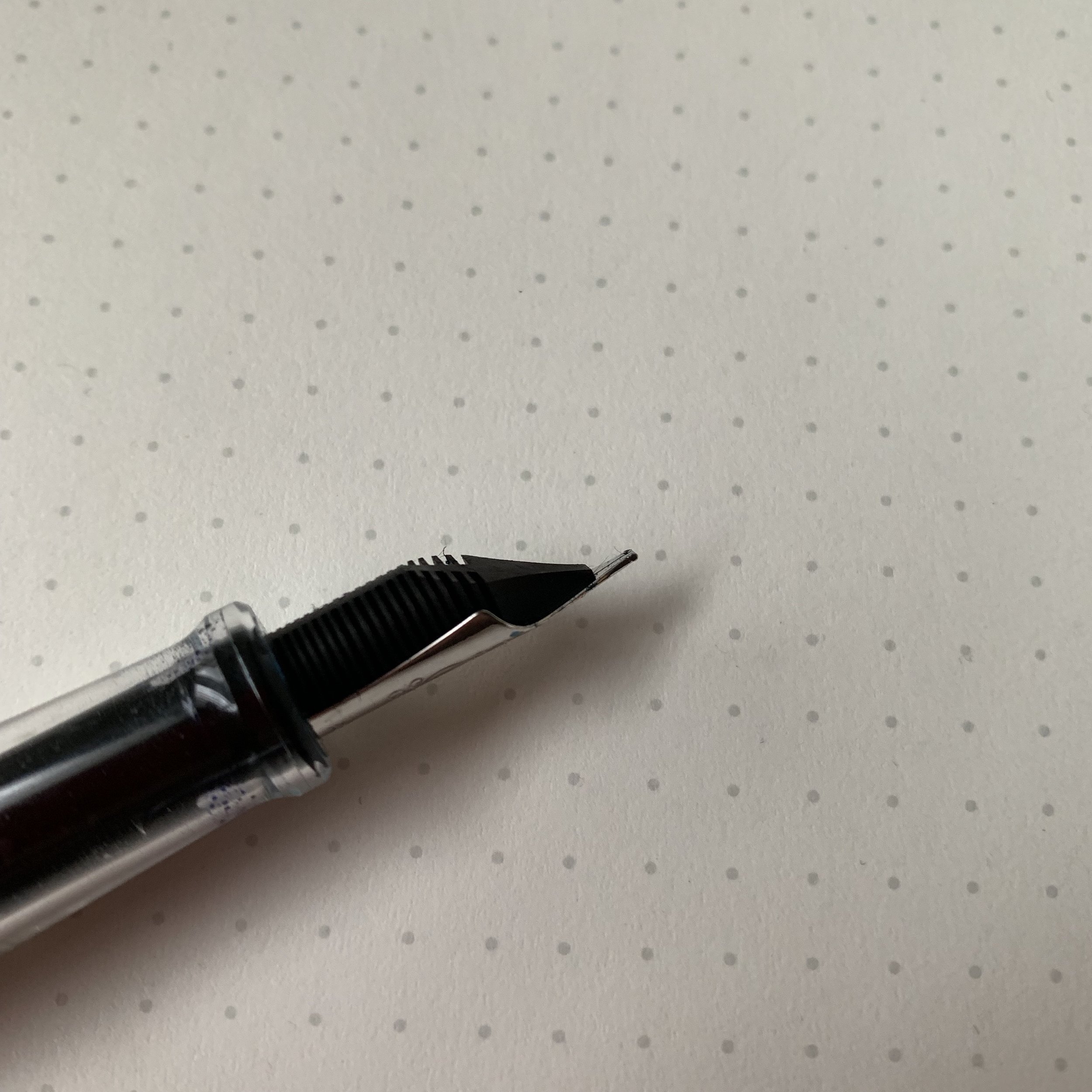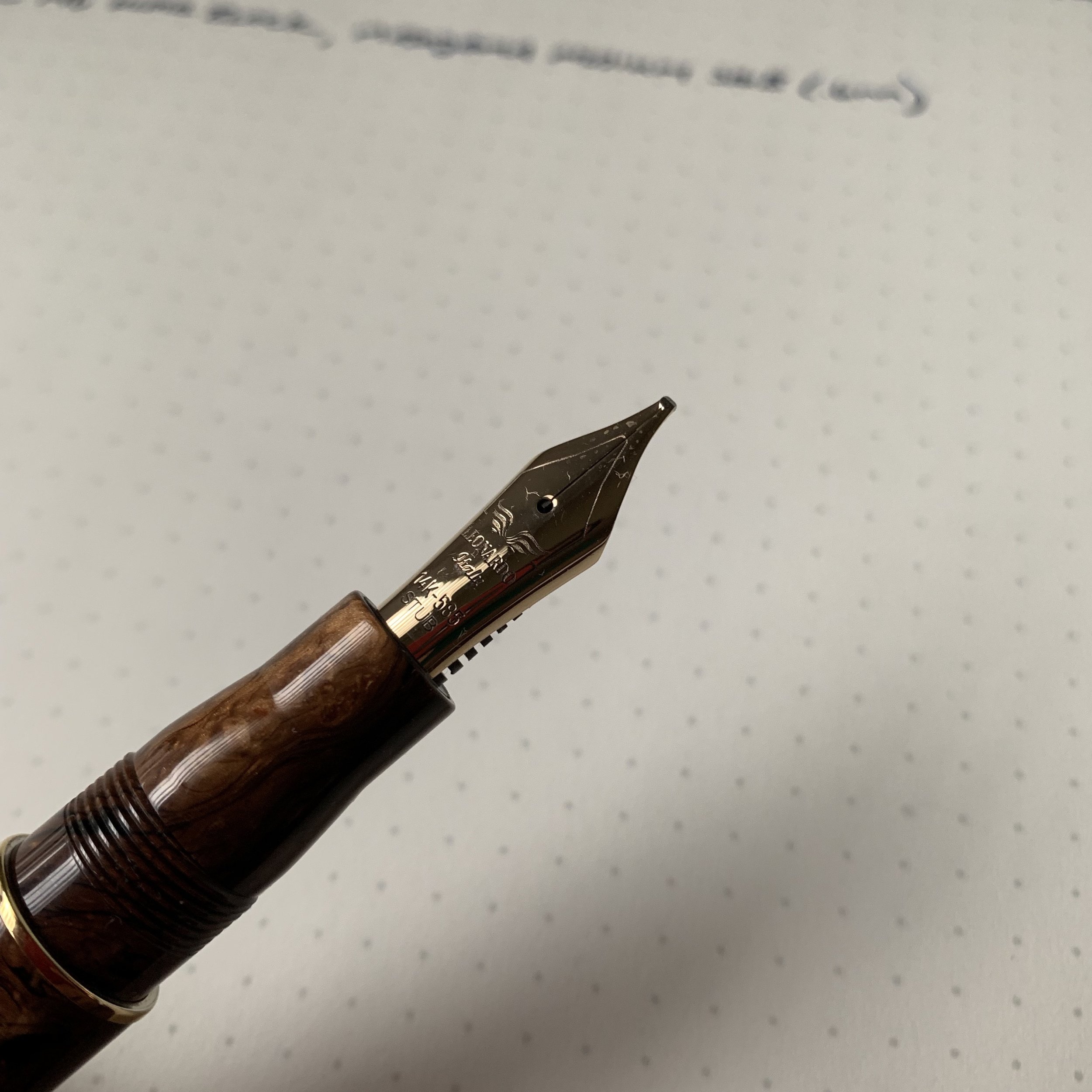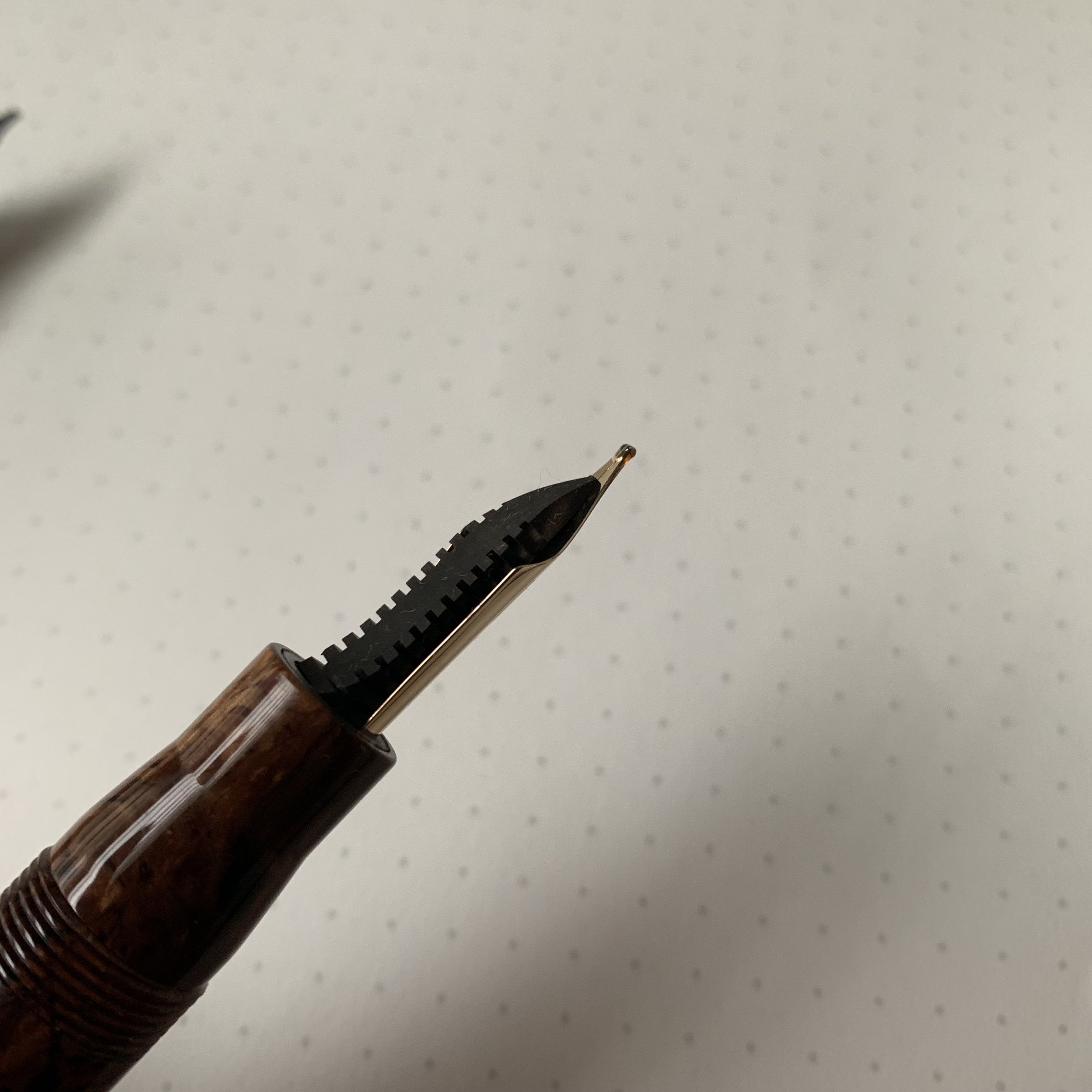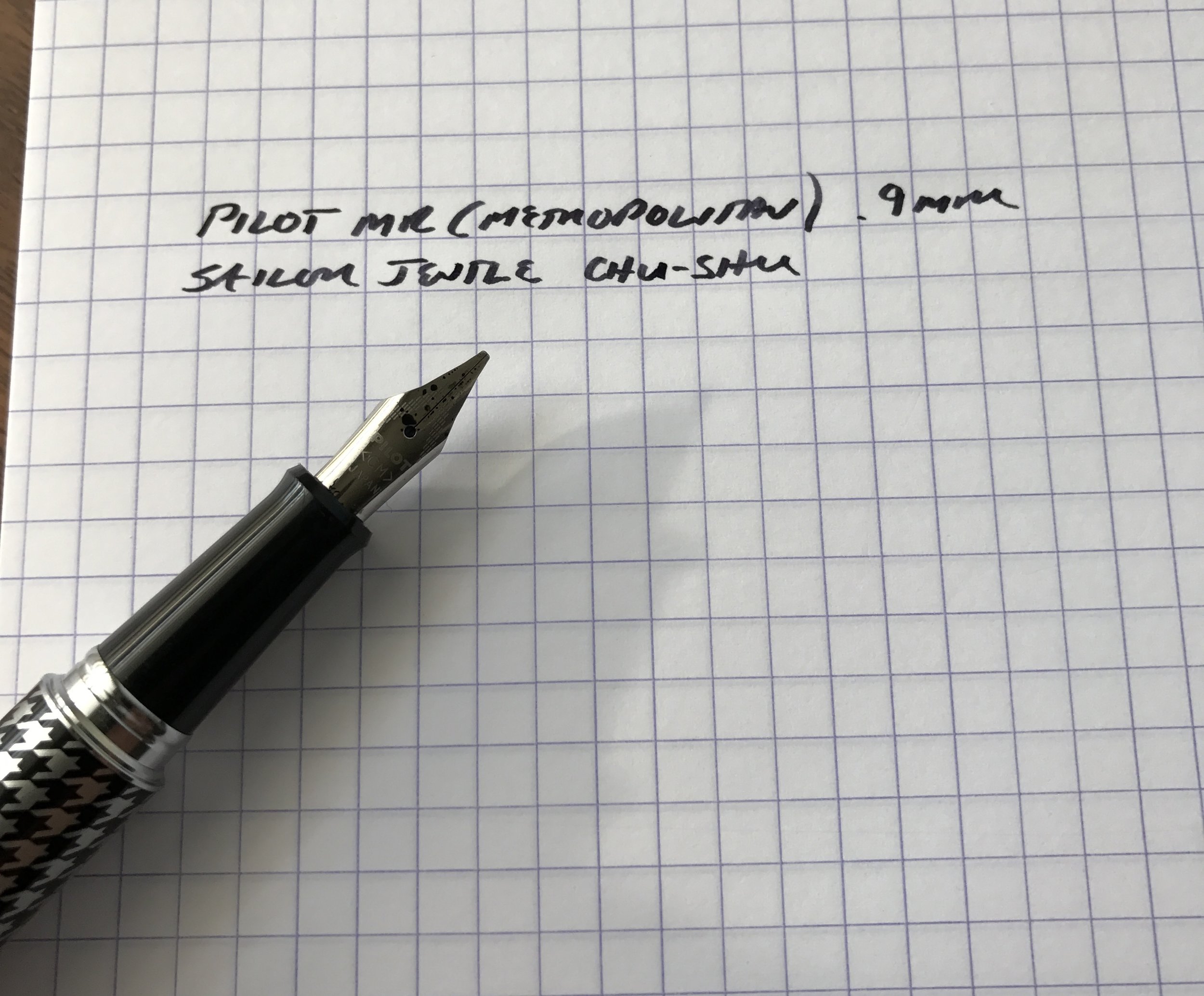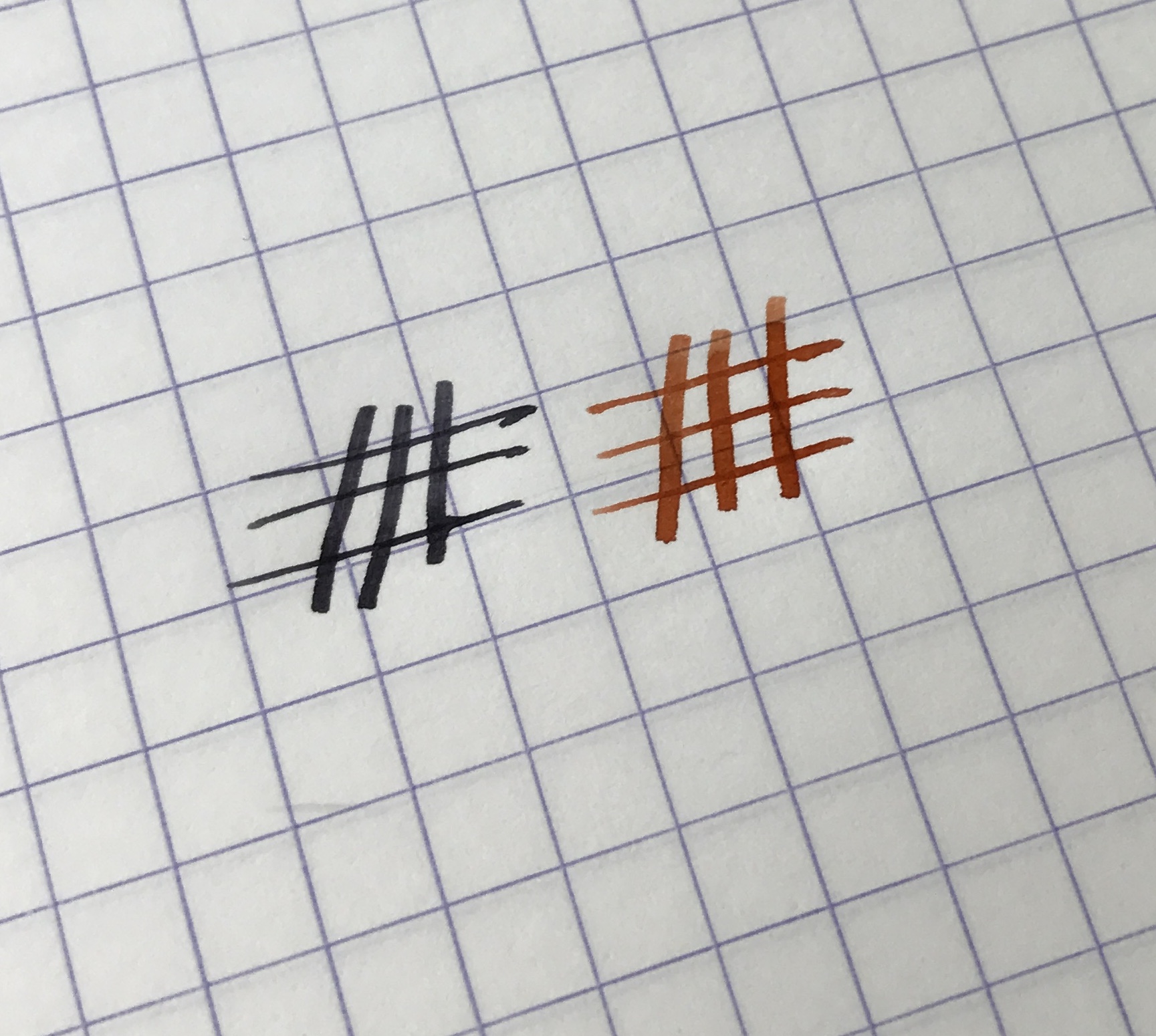I’m traveling this weekend, but during a bit of downtime this morning I finalized my latest update to the site resources: a page aggregating all of the previous reviews and posts on specialty and custom nibs. I plan to supplement this as I work my way though a longer ongoing project in which I’m taking the time to compare and review different specialty grinds from many different pen companies and nib grinders. Honestly, this project will probably never be complete, but since nib grinds and nib customization have become such a huge part of the “experience,” I figured a resource like this would be helpful. Enjoy!
Exploring Stock Stub Nibs, Part II: Higher-end Options
A couple of years ago I wrote a piece on stock stub nibs, which focused on inexpensive options such as the Pilot Metropolitan and the TWSBI 580, both of which offer a very affordable stub nib that gives you line variation and makes your writing look more interesting at a price point as low as $15. As I wrote in that article, the main advantage to starting out with these inexpensive specialty nibs is that they allow you to learn how a stub writes without having to (potentially) sacrifice a pen in your collection to a nibmeister. I say this because for every pen I have had custom ground that ended up amazing, an even greater number of grinds didn’t work out, mostly because I chose a poor grind for my handwriting style, but a couple flopped because I went to a pen show and had the pen worked on by someone who didn’t know what they were doing.
Here, I want to discuss a couple of excellent stock stub nibs that are available on pens at higher price points. You might ask why spend money on an expensive stock stub when you can get a pen custom ground to your own personal preferences? A few things to consider:
If you’re looking for a stub nib at a standard “broad” width, a stock nib offers this at a stock price point (though sometimes with a slight upcharge) without having to undertake the additional expense and uncertainty of going the custom grind route.
You don’t have to visit a pen show. If you’re thinking of getting a pen custom ground for the first time, I highly recommend visiting a pen show and having the nib work done in person. You can work with the nibmeister to adjust the grind to your specifications as opposed to working through the mail. The costs of return shipping can add up!
Most importantly, a stock stub nib is covered by the manufacturer’s warranty and return policy. Everyone in this hobby thinking of having their nibs custom ground should realize that it voids the warranty on the pen, so if the grind doesn’t work out, you have to replace either the nib or the pen. On the other hand, if a stock stub is bad, or the grind doesn’t work for your particular writing style, you can return it to the retailer or distributor for an exchange.
So which stock stubs am I currently enjoying? I added a couple to my collection last year:
Three writing samples, starting from top: the Leonardo Officina Italiana Stub; the Aurora stub, and a custom ground .6mm Masuyama stub for comparison purposes.
Aurora. If you enjoy a crisper nib that offers more line variation than your typical stock nib, Aurora makes an excellent 18k stub. It’s approximately .7mm in width and has an ebonite feed, making the line width and ink flow perfect for everyday writing. It’s also surprisingly smooth, and mine has little to no tooth. A few years ago, I had picked up an Aurora Ipsilon Quadra with a stock italic nib, and I didn’t care for that nib at all because it was far too sharp and skipped and hard-started like crazy when I tried to use it as an actual writer. The stub on my 88 Minerali, however, is superb, on par with custom work. Lately, the word has gotten out about Aurora stock stubs, so they have been a bit harder to find. Currently, Pen Chalet has a stub nib option available in the all-black Aurora Unica Nera, and Dan Smith at The Nibsmith also keeps them in stock as an option for most Aurora pens.
Leonardo Officina Italiana. If you prefer a wider, smoother stub, consider the offerings from a new pen company based in Italy, Leonardo Officina Italiana. I was a fan of Delta pens before that company went out of business, and Leonardo was founded by former Delta employees. The company’s products reflect its heritage, though I’d say the Leonardo pens I own are a step above Delta in terms of fit, finish, and quality control. (It also doesn’t hurt that they have access to some discontinued Omas celluloids, due to a manufacturing partnership with Omas successor Armando Simoni Club.) Though wider than the Aurora stub (about 1.1-1.3mm), the Leonardo nib also features an ebonite feed and writes a narrower line than you would expect, making it another good option for everyday writing. I hear good things about Leonardo’s steel stub nibs as well, but haven’t personally tried them. I acquired the pen pictured here from Pen Venture as part of a three-pen set, and Emy tuned the nibs to perfection prior to shipping.
Franklin-Christoph and Pilot. Two other brands I should mention are Franklin-Christoph, which offers a wide variety of stub, cursive italic, and S.I.G. (Stub Italic Gradient) nibs in both stainless steel and gold. Those nibs are all excellent, and deserve their own article. The other brand I should mention here is Pilot, and in particular the Vanishing Point. Pilot offers a stub (“SU”) nib option for the VP that is roughly the same width as the Aurora, but I haven’t had the opportunity to write with one extensively.
If you’re interested in custom grinds, you can also check out this article, in which I talk about some of my favorite specialty grinds.
Disclaimer: This post contains links to paid sponsors and affiliates. Both pens pictured in this post were purchased by me with my own funds, for my own collection.
Stock Stubs: Exploring Specialty Nibs
I've written before on nib customization, and how much fun it can be to attend a pen show and have a nib technician (or "nibmeister") grind a nib into something more unique than your standard fine, medium, or broad. But what if you can't get to a pen show, or you don't know that you want to spend $40-70 to have the nib on one of your pens irreversibly modified? If you're interested in trying something different, I'd recommend that you start with a stock stub, available at price points as low as $15.
What is a stub nib?
Two of my favorite stock stub nibs: left, the Pilot Metropolitan, and right, the TWSBI Eco 1.1mm.
A stub is an italic-style nib that will give you the line variation of a formal italic (i.e., thick downstrokes and thinner horizontal cross-strokes - see pictures below) but isn't so sharp that you can't use the nib as a daily writer. A stub nib is squared off, like an italic, but with more tipping material and rounded edges to help the nib write smoothly. While I personally can tolerate a bit more "crispness" in my italic nibs, when I first started out in the pen hobby I used a lot of stubs because they are so easy/pleasant to write with, and still break them out from time to time.
Note: Most stock steel stubs are technically better described as a hybrid between a stub and an italic - they don't have much, if any tipping material, though their edges have been smoothed significantly, to the point where I don't have a problem referring to them as "stubs."
Best Standard Stock Stub Nibs
Those interested in trying a stub-nib fountain pen have a lot of low-cost options to choose from. Here I'm going to limit myself to four recommendations, though others do exist. Some of these pens even feature interchangeable nibs and screw-in nib units, so if you end up not liking the stub nib, you can swap it out for something more to your liking.
- Pilot Metropolitan. Pilot recently released its $15 Metropolitan with a 1.0mm steel stub nib. Previously, if you wanted a steel stub by Pilot, you had to purchase a Plumix calligraphy pen and swap the nib on the Plumix into the Metropolitan. While this stub probably falls more on the "italic" end of the spectrum - there's not a lot of tipping material at all and it's crisper than the TWSBI - it's still a smooth nib that's not too wet. I've been using this off and on for the past couple of weeks at work without any major issues even on the cheapest of paper. (My review of the Metropolitan)
- TWSBI Eco 1.1mm Stub Nib. At the $30 price point, you can purchase the piston-filling TWSBI Eco with a stub option. TWSBI stubs are also very smooth, and I find them rather wet, depending on the ink you choose. If you'd like the ability to change nibs more easily, consider the TWSBI 580, Diamond Mini, or Vac Mini, which are more expensive but allow you to purchase aftermarket interchangeable nib units. You can change the nib on a TWSBI Eco, but the nibs aren't sold separately - you'd have to purchase a new pen and pull the nib (or trade nibs with someone else you know). (My review of the TWSBI Eco)
- Conklin Stub Nibs. A couple months ago I had the opportunity to try out a Conklin Mark Twain Crescent Filler with a stub nib, and came away very impressed. Conklin pens are manufactured by Stipula in Italy, and you can find them at price points as low as $52 (or even below that with a discount code). If you like Conklin's designs, their stub is a great option. (My Review of the Conklin Mark Twain)
- Lamy Italic Nibs. Finally, Lamy sells stub/italic nibs in widths ranging from 1.1mm to 1.9mm, that fit the Safari, Studio, and AL-Star line of pens. (Links are to my reviews of those pens.) These nibs are typically sold separately - Lamy nibs feature a proprietary design that allows you to easily slide them on/off the pen. I've had mixed experiences with Lamy nibs, so I'm hesitant to give them a glowing recommendation since they can be somewhat sharp writers and a bit drier than the other recommendations on here.
As I mentioned, this post is not intended to serve as a comprehensive guide to stock specialty nib options - just a starting point. Many pen companies such as Pelikan, Montblanc, Aurora, etc. offer stock stub, oblique, and italic options, albeit at a much higher price point than the pens discussed here. If you own a pen that accepts JoWo nib units (like many custom pens from Edison, Shawn Newton, etc.), you may also want to consider Franklin-Christoph specialty nib units, many of which are hand-ground by Mike Masuyama. Again, they will run you a bit more, but the quality and variety is exceptional. I may do a stand-alone post discussing these nibs in the future!
Disclaimer: The Pilot and TWSBI pens featured in this review were purchased with my own funds, for my own collection, from Anderson Pens, a sponsor of this blog. This post also contains affiliate links.

